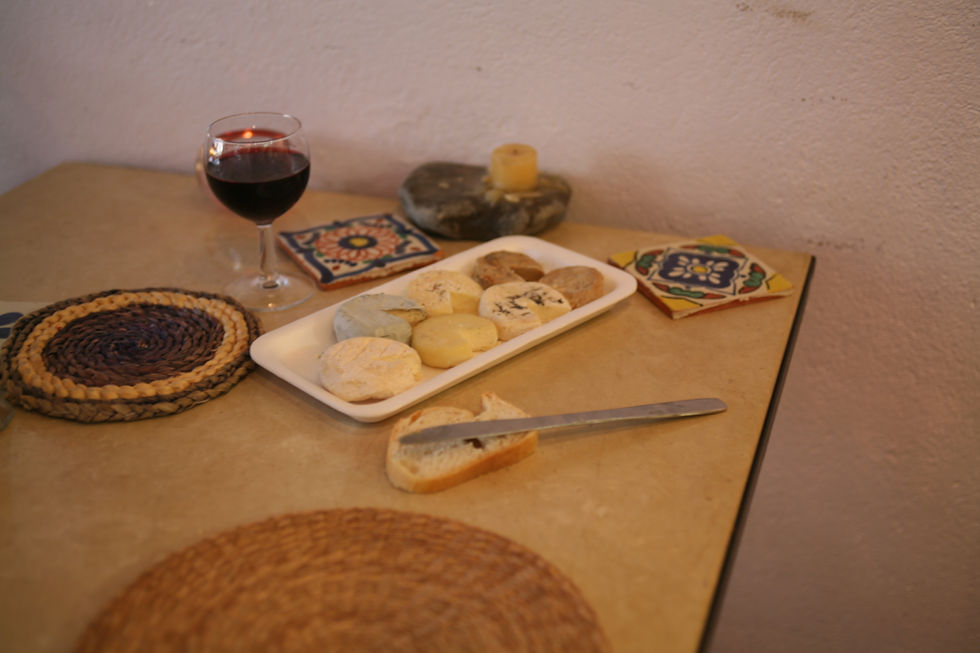(11) Star of the north, Maroilles (or Marolles)
- C Demeyer
- Dec 11, 2021
- 3 min read
Updated: Jan 3, 2022
Talking about traditional cheeses, this is the classic cheese from the north of France. On top of this, it will be a good introduction to my next post; however, you might have to wait a touch longer than usual for it.
Talking about traditional and classic, it has been made since 962. Its history went back to the creation of the Abbaye Saint-Humbert of Maroilles funded around 650. After great efforts, including building the Abbaye and preparing fields, herds of cows were created. It can be guessed that cheese was made before the eight century but Maroilles became known when it attracted demands from other prelates in the tenth century.
Four formats of the cheese exist at present, see below for specifics, and many variants have been created to celebrate and give homage to this wonderful product, it even features in a French film (I love films as well). It is one of the many cheeses created by monks, or under the supervision, guidance and technological knowledge of monks. There is no question that its quality is due to the hard work of its cheesemakers through time. Please find below a technological explanation of the cheese.

Grand Place of Lille, the main town of the north of France
The animal producing milk for this cheese is cow. The animal should be grazing at least 170 days a year with a total of 30 ares per animal with bocage included and a possible half part of reserve fodder production. There area many restrictions as to the health and welfare of the animal.
The milk produced can be used raw, thermised, or pasteurised, it cannot be standardised but can be skimmed. The milk has to be used within 72 hours of obtention and lactic ferments, predominantly mesophilic, are added. Natural veal rennet is added at between 32 to 38oc with pH between 6.35 and 6.65.
The resulting curds are then cut into cubes and most of the whey is removed by natural drainage before moulding is done.
The cheese is moved to the drying room, 16oc min., where it is turned in the mould at least three times. The cheese stays in the mould for at least 16 hours after which salting is done by salting, either dry salt, either a combination of dry salt and brine bath, either in a brine bath.
The cheese is then moved to a specific ventilated maturation room where it stays for at least 48 hours before transfer to the maturing cellar, naturally made of brick or stone at temperature of 9 to 16oc and at least 90% relative humidity. During the affinage the cheese will be brushed and washed with a brine solution containing Brevibacterium linens.
The finished product is controlled before commercialisation, some inferior product is used to make Boulette d’Avesnes or altogether rejected. It is to be noted that the length of time indicated is the strict minimum as defined by law and the Syndicate of Maroilles, however, the cheese is frequently matured much longer for perfect maturation and this can be up to 4 months.
The four formats are described below, with in italic correspondence as given by the Syndicate of Maroilles.
Maroilles full format: 12.5 to 13cm in the mould (0.3cm tolerance), 360g of dry matter, 35 days of maturing from the date of coagulation, 720g min. when matured;
Maroilles Sorbais: 12 to 12.5cm, 270g, 28 days, 540g;
Maroilles Mignon: 11 to 11.5cm, 180g, 28 days, 360g;
Maroilles Quart: 8 to 8.5cm, 90g, 21 days, 180g.
A hard-looking dark orange to lie-de-vin square smelly cheese, it reveals a dense white paste with little eyes. There is a definite strength to this cheese and the aroma is lactic but complex, with undergrowth mixed with some ammonia, and some damp cellar quality. It cuts easily but be careful as the outside is softer than the centre. The taste is complex as well with the best product showing some grassy quality with a mix of bitterness and acidity balanced in a nutty flavour with the ammonia present and a touch of onion. It is a very versatile ingredient bringing character to many dishes.
Safe keeping: to be consumed within the week when cut, wrap in cheese paper and then loosely in cling film (for the smell) and keep in refrigerator but refresh daily.
Statistics: 200000ha production in 2005, 11 farm, 3 industrial producers, 19 affineurs, 2700 tonnes (2005), 2864t (2006), 4024t (2009) including 246t farm-produced, 4147t (2016), 4241t (2017) including 275t, 4160t (2018) including 282t, 4196t (2019) including 295t farm-produced.
AOC in 1976, PDO in 1996.



Comments